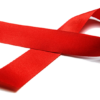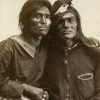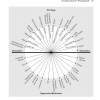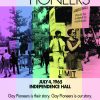The AIDS Epidemic (2 of 4): Activism and Marginalization – Voices Left Out

This lesson seeks to highlight the ways that people of color and women were marginalized within AIDS activism and AIDS federal research programs.

Instructional Resources for California Educators, Students, & Families

This lesson seeks to highlight the ways that people of color and women were marginalized within AIDS activism and AIDS federal research programs.

This lesson plan seeks to examine the ways in which the United States government ignored a disease that took thousands of American lives. It will debunk fallacies about HIV/AIDS and use the history of AIDS in the US to analyze how powerful activism can be.

This lesson plan explores two-spirit traditions in some Native American cultures. Students will learn different perspectives on gender roles and gender expectations. They will contrast the beliefs and values within these traditions with those of early European immigrants.

This lesson explores culture, oppression, and colonialism by exploring Native American gender roles and how they differed from Spanish gender roles.

This lesson serves to introduce students the concept of intersectionality to help them gain a new framework for better examining themselves and how they fit into the world around them.

This lesson covers the contributions of the Lavender Menace, or Lesbian Feminist movement, of the 1970s to the general Second Wave Feminist movement, as well as the limitations and downfalls of Lesbian Feminism.

Gay Pioneers is the story of the first organized annual “homosexual” civil rights demonstrations held in Philadelphia, New York and Washington, DC from 1965-69. When few would publicly identify themselves as gay, these brave pioneers challenged pervasive homophobia.